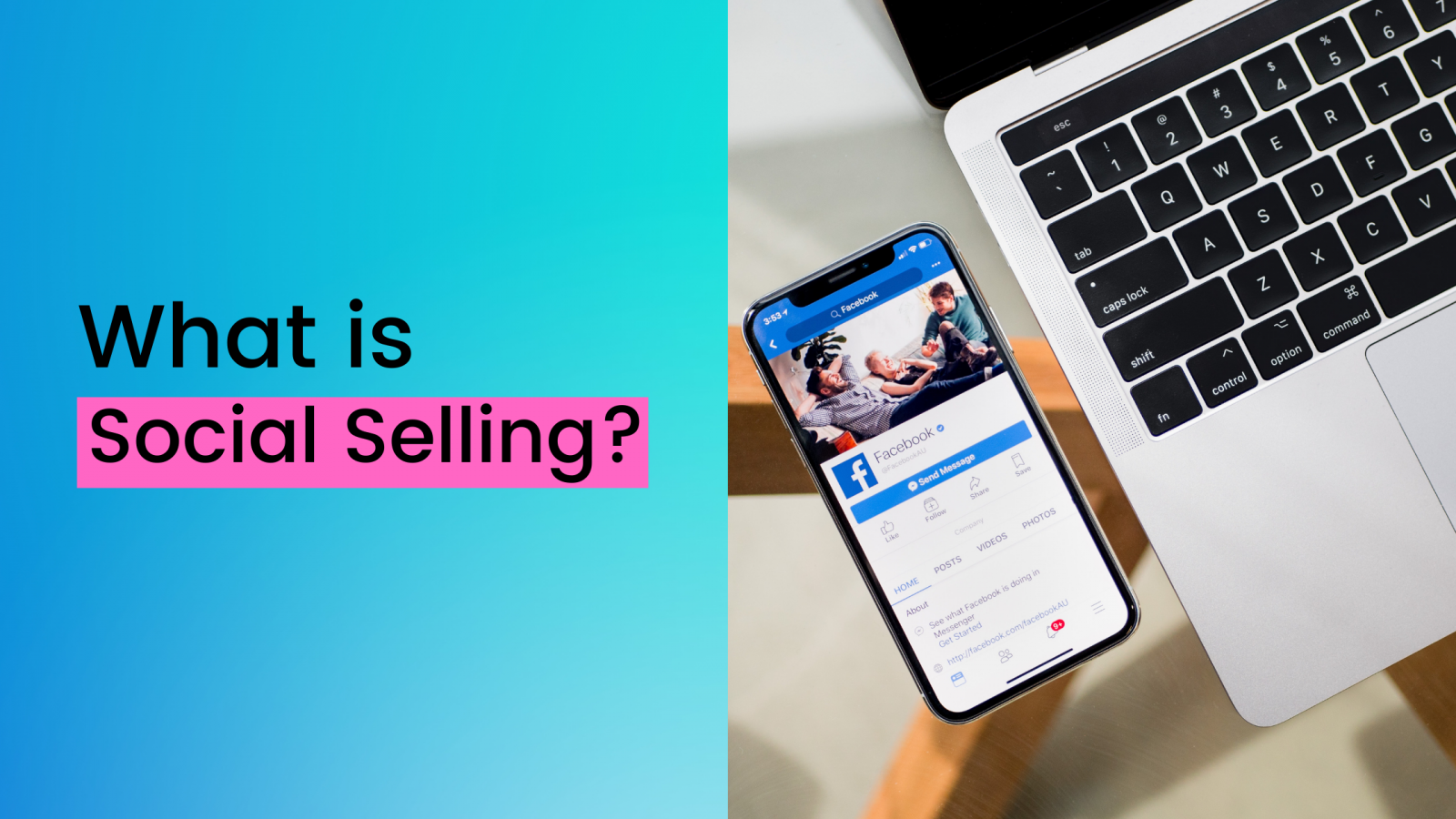Social selling is the art of using social media to find, connect with, understand, and nurture sales prospects. It’s the modern way to develop meaningful relationships with potential customers so you’re the first person or brand a prospect thinks of when they’re ready to buy.
For many salespeople, it’s replaced the dreaded practice of cold calling.
If you have a Facebook Business Page, LinkedIn profile, or professional Twitter account, you’re already engaged in the basics of social selling—even if you’ve never actually used the term to describe your online activities, or thought all that much about exactly what social selling really means.
Social selling is not just about gaining access to contacts but about building relationships and listening for the right moment to join the conversation so you can present yourself as a solution to a problem. The aim is to address a pressing need to make your prospect’s life easier rather than becoming just another online irritant to ignore.
———————————————————————————————
Social selling is a lead-generation technique where salespeople directly interact with their prospects on social media platforms.
Here’s a basic example of social selling:
- Mike works in sales for a flooring company. On Twitter he sees that a woman named Monique is opening a bakery in his city and she’s looking for contractor recommendations.
- Mike sees this as an opportunity to recommend some companies he’s previously worked with and sends her a message via social.
- Monique receives the message and sees in Mike’s social profile that he works for a flooring company. She’s been meaning to shop for flooring and puts Mike’s company on her short-list.
- Mike sends a follow-up note on social the following week, and Monique sets an appointment to visit his showroom.
As you can see in this scenario, social selling isn’t a quick, one-and-done deal. But social channels are prime territory for connecting with new prospects and the foundations for new business relationships.
Social selling best practices
Now that you know what social selling is, let’s look at some important best practices for implementing an effective social selling strategy.
1. Show up
You know what’s not very social? Robots. You may be tempted to save time with automated liking and commenting tools, but these do nothing to build rapport. In fact, they can do serious damage to your personal and professional brand. Yes, there are ways to incorporate social bots into marketing and customer service, but when it comes to selling, nothing beats a real, live human.
So: Show up. Engage. Be present. Be yourself. Remember, the point of social selling is to build relationships. The goal is to make yourself seem more human and approachable—not less.
Be sure to optimize your social media profiles across all networks to maximize the impact of your social selling strategy. Look at your profiles from a prospect or customer’s point of view. Do they present you as a credible professional who has valuable insights relevant to your market? If not, do some tweaking to ensure your profiles present you in the best possible light—and have a consistent tone and message across all networks.
2. Listen strategically to identify leads
Your customers and prospects are sharing incredibly valuable information on their social channels—they’re basically telling you exactly what they want and need. All you have to do is pay attention.
Use social lists and Hootsuite streams to monitor what people are saying about you, your company, your industry, and your competitors. Watch for pain points and requests for recommendations, both of which provide natural opportunities for you to provide the solution to a problem.
Before reaching out to any of the leads you identify, check their following and follower lists to see if you have any mutual connections. If you do, ask your shared contact for an introduction. And make sure to customize your messaging based on the wealth of information people share on their professional social media profiles—mentioned a shared interest for example, or that you particularly enjoyed a blog post they shared.
3. Provide value
It means providing valuable insight to the right prospects at the right time.
When interacting with prospects and customers through social networks, it’s important not to get too “pitchy.” Rather than simply extolling the value of your product or service, your goal should be to contribute valuable information that can help establish you as an expert in your field. Write posts that share important knowledge, but don’t be afraid to share relevant posts from others as well. When sharing content from others, add a short comment of your own about how the knowledge can be applied in your specific field.
It’s certainly okay to mention your product or service in some of your social posts, but don’t make your posts sales pitches or presentations. Your goal in social selling is to establish relationships that will eventually lead to a sale, not to make a sale on first contact. Which brings us to the last of our four best practices for social selling…
4. Build meaningful relationships
Stay in touch with your new social contacts over time. Pay attention to the content they’re posting, and jump in from time to time with a like or a comment to let them know you’ve read and appreciated what they have to say.
If a contact moves to a new position or company, send a quick note of congratulations. If you notice a contact asking for help or advice, jump in with a meaningful answer, even if it doesn’t directly promote your product. Focus on how you can help your contacts or make their lives easier. If you can establish yourself as their go-to person in your industry, guess who they’ll call when they’re ready to make a purchase?
How to get started with social selling on each platform
As a professional social network, LinkedIn is the most obvious social network for engaging in social selling—particularly in the B2B space. After all, 50% of B2B buyers use LinkedIn as a resource when making purchasing decisions—and you need to be active on LinkedIn to position yourself as a player in those decisions. Here are three key ways to start using LinkedIn for social selling.
1. Build your credibility
Ask for endorsements and recommendations from connections with whom you have a good relationship. These are posted on your profile and can help give you instant credibility with new contacts. And make sure your profile highlights expertise relevant to a potential customer, rather than an employer. Highlight how you’ve helped previous customers achieve their goals.
2. Extend your network
Use LinkedIn advanced search to uncover potential new connections by leveraging existing relationships within the network.
According to Fortune, an advisor at financial services firm Guardian Life picked up 35 referrals from just one client using LinkedIn. That rep’s business has more than doubled since he started prospecting on social networks.
3. Get social in Groups
Join LinkedIn Groups that are relevant to your industry to start networking with peers and prospects. Use the search feature on your LinkedIn homepage to find new Groups, or choose from LinkedIn’s suggestions of Groups you may like.
You may also want to look into LinkedIn’s Sales Navigator, the network’s professional social selling tool.
Twitter is a great network for social listening because of the ability to create Twitter Lists to monitor content from specific groups of people. Here are three key Twitter lists you can use to get started with social selling on the network.
1. Existing customers
Use this list to keep close tabs on your existing customers and watch for opportunities to reply to or like their Tweets so you can keep yourself on their radar.
Don’t overdo it, though, and be sure that your engagements with clients are meaningful—only “like” Tweets that you actually like, and only comment when you have something valuable to say. Unless you’re in a super-secretive industry, you may want to consider making this list public so that prospects can get a sense of what kind of businesses you’re already serving.
2. Prospects
As you identify potential future customers, add them to a private list—you don’t want to share this information with competitors, and you don’t want users to know you’ve identified them as prospects until the time is right to reach out. Keep a close eye on this list, too, but don’t engage with the same sense of familiarity as you do with existing customers. Keep a particular eye out for requests for help or statements of pain points where you can reply with a helpful comment.
3. Competitors
Again, this list should be private. Adding competitors to a private list lets you keep tabs on them without actually following them. This competitive intelligence can help spark ideas for your own social selling efforts.


Add a Comment